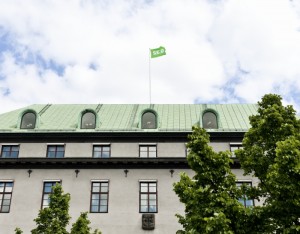SEB speeds to $3bn book for $600m AT1 return
May 22nd, 2017
Skandinaviska Enskilda Banken (SEB) took advantage of a strong post-FOMC market to attract some $3bn of demand to a $600m perpetual non-call five Additional Tier 1 on 16 March, its first AT1 transaction in over two years.
 The AT1 is only the second such issue from SEB, with the Swedish bank having sold a debut, $1.1bn 5.75% perpetual non-call 5.5 deal in November 2014.
The AT1 is only the second such issue from SEB, with the Swedish bank having sold a debut, $1.1bn 5.75% perpetual non-call 5.5 deal in November 2014.
According to John Arne Wang, head of funding and liquidity management at SEB, the new, $600m (EUR544m, SEK5.28bn) issue was launched to optimise the bank’s current capital structure, with a EUR500m hybrid Tier 1 transaction coming up for call in December, rather than reflecting any additional capital needs.
SEB hit the market the day after the Federal Reserve raised rates an anticipated 0.25% in what was seen as a “dovish hike”, while sentiment was further lifted by a clear victory for the governing party in Dutch elections and a worse than expected performance by the Eurosceptic far right.
“Throughout the first quarter the market strengthened and we saw it as quite productive,” said Wang, “and the timing of our transaction worked out well. We were anticipating some movement post-Fed, but the market was even stronger than we had hoped for on the back of the FOMC comments and also the Dutch election result.
“That gave us more momentum than we had been hoping for, and we were able to accelerate our strategy with intra-day execution rather than the one or two day transaction we had initially planned and the two or three day exercises typical of this market.”
Joint leads Barclays, Goldman Sachs, JP Morgan, Morgan Stanley and SEB priced the $600m perpetual non-call five AT1, rated Baa3/BBB, at 5.625% following initial price thoughts of 6% on the back of some $3bn of demand, and Wang said the level on a swapped basis was “very attractive”.
“The momentum was extremely strong during the transaction,” he said. “After only around 40 minutes we passed $2bn in bookbuilding. And the final pricing shows you that there was somewhat less price sensitivity.”
Fund managers were allocated 61%, hedge funds — which Wang highlighted are no longer necessarily short term buyers — 19%, insurance and pension funds 12%, and private banks 7%. The main drivers were UK accounts, including global funds, with 48% and the Nordics on 20%, he added, while the intra-day execution limited Asian participation.
Whereas loss absorption on SEB’s first AT1 was via temporary write-down, the new issue featured equity conversion, which Wang said reflected a wider trend based on the former mechanism no longer being able to achieve liability hedge accounting under IFRS. He said the switch had no discernible impact on pricing or distribution.








